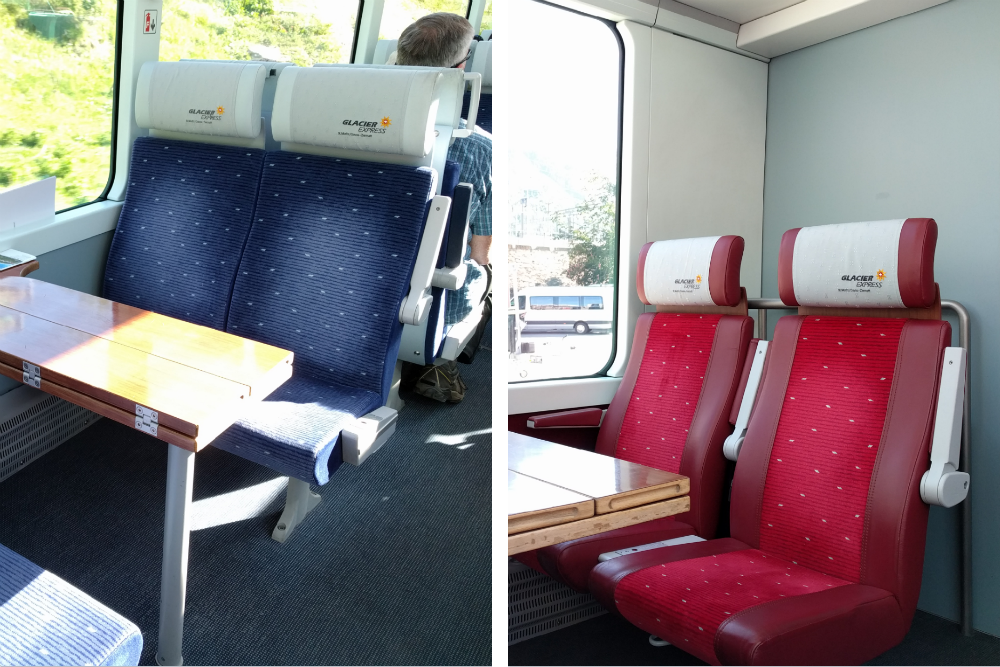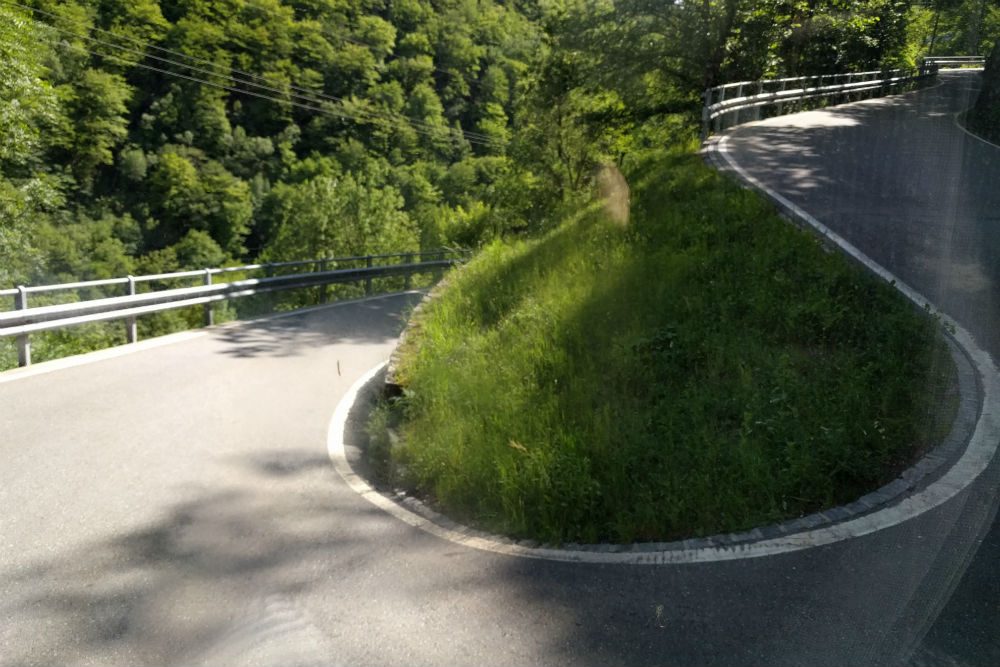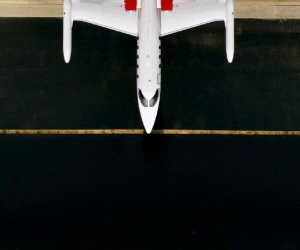Switzerland Is More Than Chocolate, Cheese, and Mountains
Switzerland is an increasingly popular destination for our readers—so much so that I’m spending a few weeks traveling the country to get to know it better and to test different Switzerland travel specialists for potential inclusion on The WOW List in the future. Each Switzerland specialist has different strengths and offers different insider experiences, so if you’re looking for a WOW trip to Switzerland, click over to Ask Wendy to get her recommendation for the right trip designer for your needs. In the meantime, to whet your appetite, here are key things you need to see, taste, and know about traveling in Switzerland—beyond the usual and expected draws (though those are pretty good too).
Follow more of my trip on Instagram @billietravels and at billietravels.com.
Don’t call them macarons.
Zurich confectionary Sprüngli has its own branded version of the colorful almond-flour sandwich cookies. They’re called Luxemburgerli, and they are a little smaller and lighter than classic macarons. Sample the always-available flavors including raspberry, hazelnut, champagne, caramel, and chocolate, but don’t miss the seasonal Luxemburgerli. May’s specials were mango and strawberry-rhubarb.
Wear thick-soled shoes even if you don’t plan on hiking.

The old town areas of Swiss cities, like this one in Locarno, are charming—but the uneven stone surfaces can be tough on your feet. Photo: Billie Cohen
You might think you only need solid footwear if you’re going to be trekking in the mountains, but the cobblestone streets of an old town (and every Swiss city has one) will quickly lead to tired, painful feet if you’re wearing thin sneakers or sandals.
The hype is true: The trains are spectacular.
The famed panoramic Glacier Express and Bernina Express live up to their reputation as gorgeous scenic experiences but, honestly, a lot of the regular train rides throughout the country offer equally stunning views. Switzerland Tourism sells a few varieties of train passes to make system-wide travel easier and more economical (you can purchase consecutive-day or flex passes for 3, 4, 8, or 15 days). Since I’m here for about a month, I chose the half-fare travel card; it gave me discounted tickets on long-distance, panoramic trains and local transportation, including buses, trams, and many scenic cable cars and even some local taxi services. I also tested an eight-consecutive-day, first-class Swiss Travel pass, courtesy of Switzerland Tourism, to see what that kind of freedom feels like and to experience first class. The Travel Pass covers all of the above, plus gives you free admission to more than 500 museums and attractions. There is plenty of info on myswitzerland.com to find the right one for your trip.
Second class is really nice.

On the Glacier Express, first-class seats (the red) are a bit roomier than the blue second-class section, and there are fewer seats in each car. But second class is still quite comfortable, even on regular trains. Photo: Billie Cohen
When traveling on trains or buying your Travel Pass, you’ll have a choice between first and second class. As you’d expect, first class is more spacious, the seats are bigger, the tables are bigger, and there are fewer people in each car, but second class is really nice too. This is no coach vs. business class dichotomy here—second class is very comfortable and the seats are roomy. In many cars, if I was sitting in a foursome (two seats facing another two seats with a little table between), I had enough room to keep my roller bag at my feet without crowding the person opposite me. I also found outlets in several second-class cars during my travels. Where I really appreciated first class was on my seven-hour Glacier Express trip. Since I was on that train for so long, it felt luxurious to have room to stretch out, a big table so I could spread out my maps and my laptop, and a less-crowded car.
But trains are not the most scenic way to travel.
That is not to say Switzerland’s trains are not spectacular. They absolutely are. I’ve criss-crossed the country on long-distance routes, inter-city expresses, regional connections, the famed panoramic Glacier Express, and even a 125-year-old cog railway that chugged to the summit of Monte Generoso at 1,704 meters. And I loved every second of every ride. Whether you travel first or second class, trains are comfortable, roomy, clean, and even the most basic local carriages have big windows. So I am not saying you should skip train travel. If you don’t travel by train in Switzerland, you are missing out. But I really shocked myself to find that after a month in this country, my personal favorite way to see it is by bus. Granted, it is slower, but that’s why I prefer it. Buses can also go where trains can’t. (Renting a car and driving introduces complications such as navigating scary roads, not being able to gawk at the scenery and drive at the same time, and not being able to have a local beer or glass of wine with your meal.) I rode the most amazing route in the Ticino region to see the famed Church of San Giovanni Battista in Mogno, by Swiss architect Mario Botta. We started out winding through charming tiny villages (where our driver knew everyone who waved to him from the streets because he’s been driving this route for 28 years) and then graduated to a series of steep hairpin turns that led up a mountain with sheer cliffs on one side and eye-popping views of the valley. I also really enjoyed the fact that we drove through many towns and villages. Yes, this meant a slower ride with more stops, but it also meant I had the chance to see where people lived and get a better sense of how the various villages are connected.
Long-distance routes like this one are run by the PostBus company, which, as its name implies, got its start as a service for delivering mail. It’s still part of the Swiss postal system, but it’s grown into a far-reaching, easy-to-use, and affordable public transportation network that’s also covered by the Swiss Travel Passes. You’ll recognize it by its bright yellow buses. The app even offers downloadable audio guides that point out sights and history along some of the routes.
Don’t miss the toilets on the trains.

The bathrooms on Swiss trains are much cleaner and more whimsical than you’d expect. Most of them have some kind of funny wallpaper to make you feel like you’re anywhere but in a train toilet. Photo: Billie Cohen
For one thing, this is practical advice, since bathrooms at train stations often cost a franc, while the toilets on the trains themselves are free. For another, the train toilets (look for the WC sign) are not only clean, they’re adorable. Yeah, I know, that’s not a word anyone would normally use to describe a bathroom, but just look at this picture! Most of the WCs on inter-city routes have whimsical wallpaper that’ll make you feel like you’re somewhere else: a homey powder room, in an under-the-sea submarine looking out a fake porthole, in an airplane flying through the clouds— and I never saw the same design twice. When the bathrooms are this nice, you know trains are a valued, respected, and well-maintained mode of transportation.
Don’t be a hero; take your Dramamine.

One unfortunate consequence of all those beautiful Swiss mountains: very, very, very sharp turns to get up them. Photo: Billie Cohen
The roads in the mountains can be very sinuous—ideal for causing discomfort to those of us who suffer from motion sickness. Even some of the trains rock side to side and may take some windy routes. And then there’s the buses, which can navigate even more serpentine roads and do a lot more stopping and starting. Also keep in mind that all modes of transportation here have front- and back-facing seats, and you may not always get your first choice, so you’ll have that additional trigger to worry about. So do yourself a favor and don’t try to tough it out. You’ll end up feeling too sick to look out the window; take whatever aid helps you feel better. If it makes you tired, you can always pep up with a coffee and a piece of chocolate!
There are gems of modern architecture, but some of them are hidden.
Mario Botta has several structures around Switzerland that are worth visiting. In addition to the San Giovanni Battista church, there’s La Chiesa Santa Maria degli Angeli at Monte Teramo and the Fiore di Pietra at the top of Monte Generoso (both in the Ticino region). Pritzker Prize-winning Peter Zumthor is another Swiss architect worth seeking out. In addition to the Therme Vals (in Vals), he designed a shelter for Roman archeological finds in Chur, Switzerland’s oldest city. That one is way off the main streets; although it’s not widely publicized, you can ask for a key at the tourist information center to access it. If you make the effort, you’ll be rewarded. I had the place entirely to myself when I visited, and I loved the contrast between the way the open-air structure incorporates light and shadow, which are always changing from minute to minute, and the ancient artifacts, which haven’t changed in 2,000 years. Another architectural gem that’s not obvious from the street is in Zurich: Santiago Calatrava’s law library at the University of Zurich is inside another building, so unless you know it’s there, you won’t notice it. The library is free and open to the public and worth the trip. There are so many other gems of modern architecture throughout Switzerland, so be sure to seek them out: the last building Le Corbusier ever designed is in Zurich; creations by Zaha Hadid, Frank Gehry and other starchitects are gathered at the Vitra Campus outside Basel; and Renzo Piano designed the undulating Zentrum Paul Klee in Bern.
It’s very easy to accommodate food allergies and preferences here.
I’m a vegetarian with many food issues, none of which were a problem here. Not only does everyone understand “vegetarian” and “vegan,” but I saw many menus that noted those options as well as gluten-free offerings. In grocery stores, packages mark these things too. Some stores have separate gluten-free sections. And I love to visit grocery stores. The two main ones you’ll see around Switzerland are Coop and Migros; the larger locations have inexpensive buffet-style restaurants and sections of housewares and even clothing.
Try all the Swiss cheese. There’s more than you think.

There a so many kinds of cheeses to taste in Switzerland, try them all. This selection is from the Appenzeller dairy. Photo: Billie Cohen
There are myriad varieties of cheese here beyond the familiar hole-pocked slices we picture when someone says Swiss cheese: There’s Emmental, Gruyère, Appenzeller, and many that are local to each region. Be sure to try them all and seek out opportunities to see it made. In Appenzell, I visited the Appenzeller show dairy and tasted several varieties. You can also visit the Gruyère factory and Emmentaler show dairy, and a well-connected Switzerland travel specialist can arrange more personal cheese experiences
There’s a rosti for every region and you should taste them all.
If you want to get very basic about it, rosti is just a big hash brown. But that’s really oversimplifying it. When done well, a big fat plate of browned and crispy rosti is exactly what your belly needs after a day of touring or hiking or shopping or whatever it is you did that day. What’s cool is that different regions in German Switzerland have their signature versions: In Appenzell, the rosti is served with a fried egg and Appenzeller cheese. The Bern version has bacon. Ask about it and try them all.
There are also regional desserts. Try those too.

Every region of Switzerland has specialty desserts. This biberli, a gingerbread cookie filled with nut cream, is popular in Appenzell. Photo: Billie Cohen
Keep your eye open for cakes, cookies, and treats in each area you visit. In Zurich and Appenzell, you’ll see a lot of small round mini cakes called biberli, which are soft gingerbread on the outside and filled with a nut cream. In Chur, I was introduced to Bündner Nusstorte (Bündner indicates it’s from the Canton of Graubünden, of which Chur is the capital), which is more like a walnut pie. Birnenbrot, also from Graubünden translates to pear bread. It’s a log of pear filling wrapped in a thin pastry.
Even the grocery stores sell good chocolate.

Every grocery store sells a large selection of chocolate at very affordable prices—and it’s good. Photo: Billie Cohen
You will likely want to try the fancy and famous chocolatiers of Switzerland, including Sprüngli in Zurich, Merz in Chur, and my favorite, Chocolat Stella in Bellinzona. And, of course, you should—they’re famous for a reason. But the quality of Swiss chocolate is so high that, as a rule, even the bars you buy in regular grocery stores are delicious. You’ll find large selections including Lindt aplenty, as well as Maison Callier and in-house lines. And whereas bite-size pralines from an upscale shop can cost 1.50 francs, standard chocolate bars are 100g (about twice the size of an American bar) and usually not more than two to three Swiss francs. The Migros grocery store’s house-brand milk chocolate bar is at the inexpensive end, and even that is creamier and more indulgent than any 80-cent chocolate bar has a right to be. Ask a local for his or her favorite brand, and you’ll get a different recommendation every time.
There are villages in the Ticino region where people still live without electricity—by choice.

The valleys of Switzerland’s southern Ticino region are dotted with ancient stone villages still in use today. Photo: Billie Cohen
The Ticino region of southern Switzerland is a varied landscape of steep cliffs and verdant valleys. And in those valleys, you can drive right up to—and walk respectfully through—miniscule villages of stone houses that date back hundreds of years. In the Valle Bavona outside the city of Locarno, for example, some families spend their summers in rustic homes, eschewing electricity and modern plumbing in exchange for being surrounded by nature. You can visit these on your own, but a local guide who knows the area, the history, the context, and some of the residents, will make a big difference since there are no signs to give you info on what you’re looking at, how the houses were built, or what daily life here is like. For example, my guide Anna, who still spends summer weekends in a mountain home in the area, shared anecdotes about residents she knew personally and how they handle basic tasks like laundry and gardening, as well as insider stories such as why the locals here chose to refuse electricity (it had to do with taxes in the 1970s), and how those who live in high-up mountain crevices get their supplies (hint: look for ground-level posts topped with orange balls, they mark the beginning of pulley wires that ascend to the heights). Anna also led me through an off-road trail dotted with ancient cave grottos still in use by today’s residents—I never would have found that on my own, or even known to look.
Be a smarter traveler: Use Wendy’s WOW List to plan your next trip. You can also follow her on Facebook, Twitter @wendyperrin, and Instagram @wendyperrin, and sign up for her weekly newsletter to stay in the know.








WOW! Awesome information and photos! Thank you. I felt I was already there, but hope to actually be there one day soon. I was getting motion sickness just watching the serpentine turns. Just beautiful. Safe travel and enjoy it all!